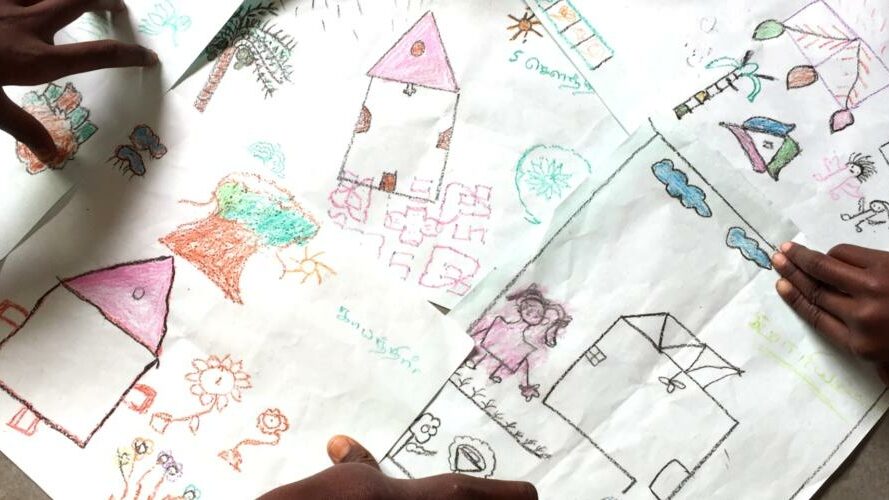Six Rescued Children Now Dream of Home
Slavery
An urgent rescue operation on Thursday brought 11 people to freedom in southern India, including six children and one baby who had grown up in slavery.
The children and their parents were freed from a rural lumber business where they had spent two years chopping down trees and making charcoal. Many of the children—ages 4 to 14—were also forced to tend the slave owner’s cows and livestock.
IJM and local officials had been investigating bonded labour slavery at this business for several months. But rescue became more urgent this week when the owner increased his verbal abuse and physical threats. Government officials quickly rallied to inspect the charcoal unit, interview the families, and bring them to safety at last.
As the adults narrated their ordeal to authorities, the children rested and drew pictures with IJM social workers. One little girl drew the kite and doll she missed from her village. Almost all of the children drew secure houses with colorful gardens—a stark contrast to the muddy tents and tarps they called home for the last two years.
Together they dreamed of playing in their village, going back to school, and even of one day becoming doctors or police officers.
As the evening went on, local officials provided warm meals, medical check-ups and safe shelter for the families. They also provided release certificates—which will prove the families’ freedom and protect them from future abuse—and money to help the survivors get back on their feet. They have also promised to give the families plots of land, so they can build homes and feel secure at last.
The slave owner was not present during the rescue operation, so local authorities are continuing to follow up so that he can be held accountable.
The speed and sensitivity these local leaders demonstrated was a great improvement from how many bonded labour cases were handled in the past. IJM has been training and sensitizing officials in this community since 2013, and the strength of this rescue operation serves as a promising sign of what’s to come.